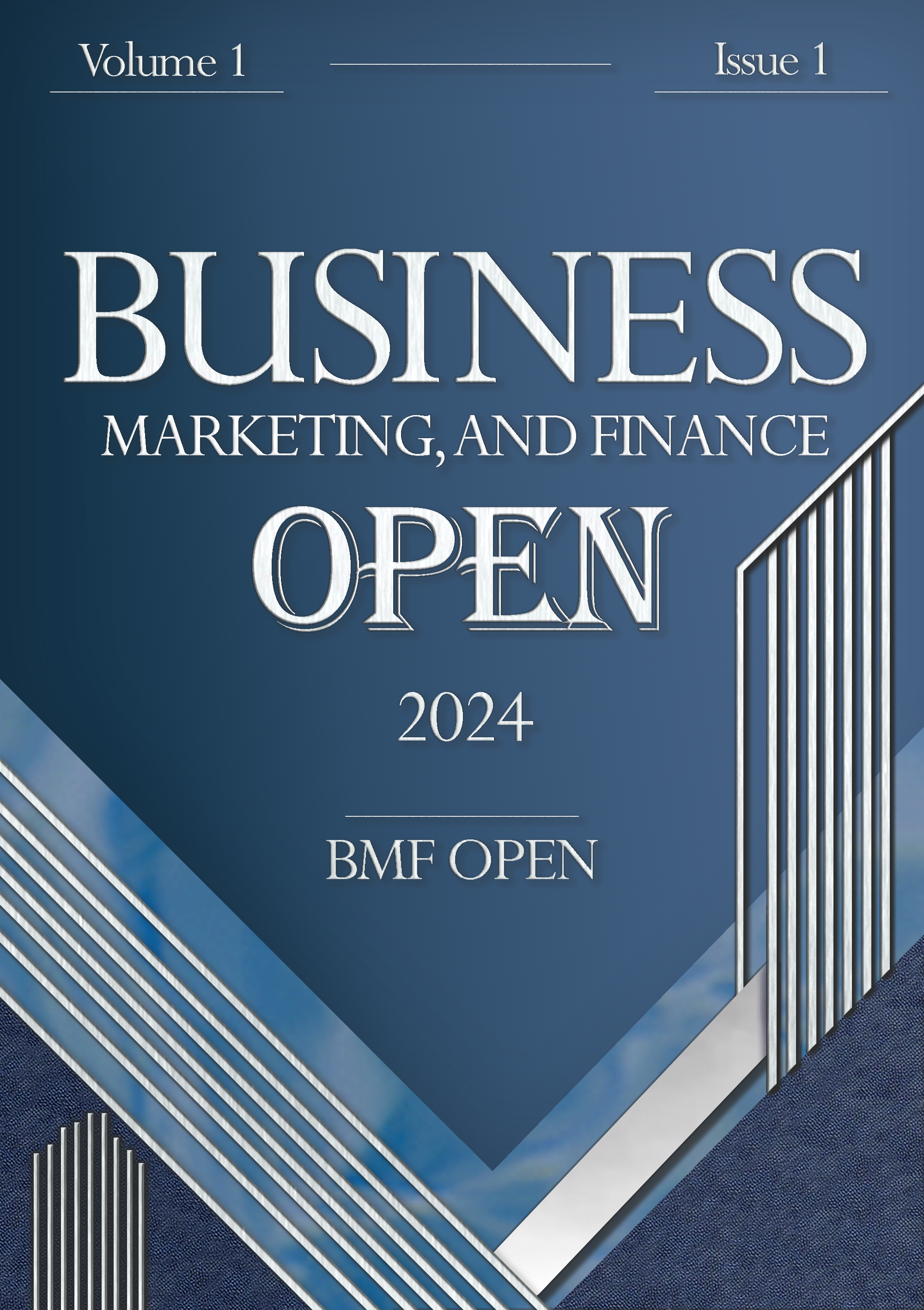The Role of Behavioral Empowerment and Smart Technologies in Enhancing Investor Decision-Making and Portfolio Optimization in the Iranian Capital Market
Keywords:
Behavioral empowerment; FinTech; investor decision-making; portfolio optimization; behavioral finance; Iranian capital market.Abstract
This study aimed to examine how cognitive–behavioral empowerment, smart FinTech applications, and behavior–finance integration jointly influence investor decision-making and portfolio optimization among individual investors in the Iranian capital market. The research employed a mixed-method descriptive–survey design. In the qualitative phase, semi-structured interviews were conducted with ten experts in finance, investment psychology, and information technology to extract key components of behavioral empowerment and technological integration. In the quantitative phase, data were collected from 384 individual investors of the Tehran Stock Exchange using a researcher-developed questionnaire validated through content analysis and pilot testing. Data analysis was performed using SPSS 26 and AMOS 24 through confirmatory factor analysis and structural equation modeling to test the hypothesized relationships among cognitive–behavioral empowerment, smart FinTech application, behavior–finance integration, and portfolio optimization. The structural equation model demonstrated excellent fit indices (CFI = 0.956, TLI = 0.948, RMSEA = 0.041). Results showed that all three constructs exerted positive and significant effects on portfolio optimization (p < 0.001). Smart FinTech application exhibited the strongest standardized effect (β = 0.41), followed by cognitive–behavioral empowerment (β = 0.33) and behavior–finance integration (β = 0.29). The model explained 64 percent of the variance in portfolio optimization (R² = 0.64), indicating strong explanatory power. These results highlight that combining behavioral empowerment with technological innovation enhances decision quality, reduces bias, and improves portfolio performance. The study concludes that empowering investors psychologically and cognitively, alongside adopting intelligent financial technologies and integrating behavioral analytics into financial models, significantly optimizes investment portfolios. This integrative approach provides a holistic framework for improving decision-making efficiency and portfolio outcomes in emerging markets such as Iran.
References
A. Antony, "Behavioral Finance and Portfolio Management: Review of Theory and Literature," Journal of Public Affairs, vol. 20, no. 2, 2019, doi: 10.1002/pa.1996.
H. Hadbaa, "Behavioral Biases Influencing the Decision Making of Portfolio Managers of Capital Securities and Traders in Morocco," Financial Markets Institutions and Risks, vol. 3, no. 1, pp. 92-105, 2019, doi: 10.21272/fmir.3(1).92-105.2019.
K. Quddus and A. Banerjee, "Understanding Heuristics-Based Financial Decision-Making Using Behavioral Portfolio Strategies," Review of Behavioral Finance, vol. 15, no. 2, pp. 121-137, 2021, doi: 10.1108/rbf-05-2021-0092.
R. Ashwini and D. G. S. Reddy, "Construction of Optimal Portfolio Using Sharpe’s Single Index Model," International Journal of Research Publication and Reviews, pp. 3661-3666, 2022, doi: 10.55248/gengpi.2022.3.7.26.
C. Auditiyah, "Implementation of Capital Asset Pricing Model in Optimal Portfolio Formation on IDX High Dividend 20," Jtam (Jurnal Teori Dan Aplikasi Matematika), vol. 9, no. 1, p. 257, 2025, doi: 10.31764/jtam.v9i1.27799.
M. Panwar, M. Verma, B. Ray, A. Vashishtha, S. Mittal, and M. S. H. Rathnasiri, "Investor Perception and Transforming Decision-Making in the Age of AI-Driven Work Arrangements," pp. 495-528, 2025, doi: 10.4018/979-8-3373-1270-5.ch026.
A. T. Nguyen and N. Nguyen, "An Insight Into the Implications of Investor Sentiment on Crash Risk in Asia–Pacific Stock Markets: Are Uncertainty Factors Important?," Studies in Economics and Finance, vol. 42, no. 4, pp. 759-779, 2025, doi: 10.1108/sef-09-2024-0586.
Z. Zhong, "The Impact of Anchoring Effect on Financial Investment Decisions and Coping Strategies," Advances in Economics Management and Political Sciences, vol. 164, no. 1, pp. 50-55, 2025, doi: 10.54254/2754-1169/2025.20718.
S. K. Chaubey, A. Goel, and A. Goswami, "A Preliminary Investigation of the Behavioral Barriers to Investing," Asian Journal of Management and Commerce, vol. 4, no. 2, pp. 276-279, 2023, doi: 10.22271/27084515.2023.v4.i2c.224.
M. Mosenhauer, P. Newall, and L. Walasek, "The Stock Market as a Casino: Associations Between Stock Market Trading Frequency and Problem Gambling," 2021, doi: 10.31234/osf.io/zqe9s.
X. Tong, "Application of Mean-Variance Model of 11 Industries in Chinese a Share Market," Highlights in Business Economics and Management, vol. 39, pp. 29-35, 2024, doi: 10.54097/ag0hct57.
H. Li and T. Liu, "Portfolio Optimization Based on the LSTM Forecasting Model," Advances in Economics Management and Political Sciences, vol. 48, no. 1, pp. 97-106, 2023, doi: 10.54254/2754-1169/48/20230431.
A. M. L. Fooeik, S. J. Sadjadi, and E. Mohammadi, "Stochastic Portfolio Optimization: A Regret-Based Approach on Volatility Risk Measures: An Empirical Evidence From the New York Stock Market," Plos One, vol. 19, no. 4, p. e0299699, 2024, doi: 10.1371/journal.pone.0299699.
Z. Du, J. Li, and Y. Lu, "An Empirical Study on the Impact of Investor Gambling Factors on Stock Cross-Sectional Returns," Advances in Economics Management and Political Sciences, vol. 95, no. 1, pp. 106-117, 2024, doi: 10.54254/2754-1169/95/2024mur0090.
M. Z. Wu, "Portfolio Optimization Under ESG Constraints: Markowitz Model vs. Index Model," SHS Web of Conferences, vol. 218, p. 02002, 2025, doi: 10.1051/shsconf/202521802002.
R. J. Oben, M. Seraj, and Ş. Z. Eyüpoğlu, "Volatility and Return Spillovers Among US Traditional Technology Stocks, Decentralized Finance Instruments And conventional Cryptocurrencies: Implications for Portfolio Optimization," Review of Behavioral Finance, vol. 17, no. 5, pp. 807-834, 2025, doi: 10.1108/rbf-12-2024-0377.
R. Zhang, Q. Liu, Q. Zhang, and J. Chen, "Research on the Impact of Investor Sentiment on Beta Anomalies in China's a Stock Market," 2024, doi: 10.4108/eai.17-11-2023.2342674.
S. Kim and O. Kiyool, "A Study on the Relationship Between Stock Return and Momentum by Volume and Price," The Korean Data Analysis Society, vol. 24, no. 6, pp. 2279-2288, 2022, doi: 10.37727/jkdas.2022.24.6.2279.
Y. Shen, C. Li, O. Scaillet, and Y. Jiang, "Dynamic Portfolio Allocation Under Market Incompleteness and Wealth Effects," Operations Research, 2025, doi: 10.1287/opre.2024.0976.
M. Sahabuddin, M. A. Islam, M. I. Tabash, S. Anagreh, R. Akter, and M. M. Rahman, "Co-Movement, Portfolio Diversification, Investors’ Behavior and Psychology: Evidence From Developed and Emerging Countries’ Stock Markets," Journal of Risk and Financial Management, vol. 15, no. 8, p. 319, 2022, doi: 10.3390/jrfm15080319.
A. Saranj and M. Zolfaghari, "Trading Behavior-Stock Market Volatility Nexus Among Institutional and Individual Investors," Financial Innovation, vol. 11, no. 1, 2025, doi: 10.1186/s40854-024-00717-0.
N. Redkin, "Investment Portfolio Optimization on Russian Stock Market in Context of Behavioral Theory," Finance Theory and Practice, vol. 23, no. 4, pp. 99-116, 2019, doi: 10.26794/2587-5671-2019-23-4-99-116.
S.-u. Rehman and B. Said, "Analysis of Investor Overreaction Effect and Random Walk: A Case Study of Pakistan Stock Exchange," Sarhad Journal of Management Sciences, vol. 5, no. 1, pp. 1-14, 2019, doi: 10.31529/sjms.2018.5.1.1.
M. Kuzmanović, D. Makajić-Nikolić, and N. Nikolić, "Preference Based Portfolio for Private Investors: Discrete Choice Analysis Approach," Mathematics, vol. 8, no. 1, p. 30, 2019, doi: 10.3390/math8010030.
Z. Wang, "Active vs. Passive Investment in the Post-Pandemic U.S. Stock Market: A Sharpe Ratio-Based Portfolio Optimization Compared to the S&P 500," Highlights in Business Economics and Management, vol. 61, pp. 41-45, 2025, doi: 10.54097/j6kd1r14.
E. G. Mohamed, "The Role of Sustainability Index Performance in Moderating the Impact of Investor Sentiment on Stock Returns," pp. 195-212, 2025, doi: 10.4018/979-8-3373-2858-4.ch008.
Y. Jaber, "Impact of Tunisian Political and COVID-19 Crisis on Asset Allocation: Traditional Theory of Portfolio Selection Versus Behavioral Theory," Wseas Transactions on Business and Economics, vol. 20, pp. 1298-1311, 2023, doi: 10.37394/23207.2023.20.116.
C. Hara and T. Honda, "Implied Ambiguity: Mean-Variance Inefficiency and Pricing Errors," Management Science, vol. 68, no. 6, pp. 4246-4260, 2022, doi: 10.1287/mnsc.2021.4097.
Z. Chen, J. Gao, and Y. Yang, "Portfolio Optimization Based on Six Chinese Stocks," Advances in Economics Management and Political Sciences, vol. 48, no. 1, pp. 207-216, 2023, doi: 10.54254/2754-1169/48/20230453.
M. Shehryar, "The Role of Weather Anomalies in Shaping Investor Sentiment and Stock Market Performance: A Conceptual Analysis," International Journal of Research and Innovation in Social Science, vol. IX, no. III, pp. 558-565, 2025, doi: 10.47772/ijriss.2025.90300044.
Downloads
Published
Submitted
Revised
Accepted
Issue
Section
License
Copyright (c) 2025 Mahboubeh Eskandari (Author); Abdolreza Mohseni; Mostafa Ghasemi (Author)

This work is licensed under a Creative Commons Attribution-NonCommercial 4.0 International License.






